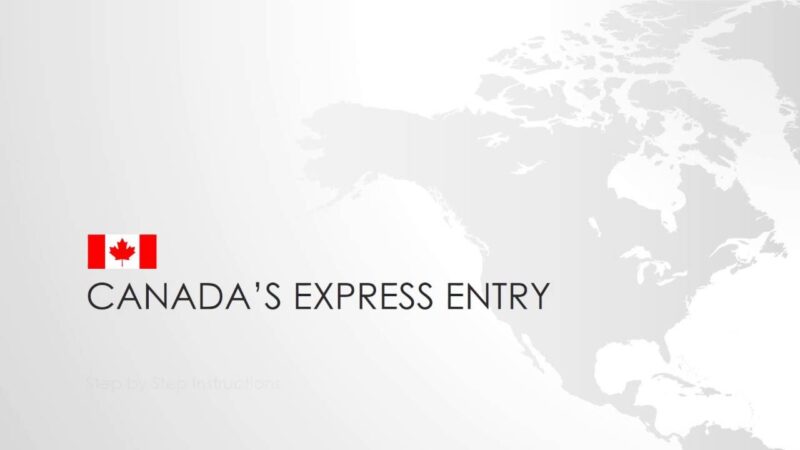Canada is planning its most significant Express Entry system expansion since category-based selection began in 2023. Immigration, Refugees and Citizenship Canada (IRCC) has unveiled three entirely new occupational categories that could revolutionize how skilled workers immigrate to Canada starting in 2026.
Three New Career Pathways Under Consideration
The federal government is actively seeking public input on adding these specialized categories to the Express Entry system:
Executive Leadership Track
The Canadian federal government is considering creating new Express Entry categories for senior managers, targeting high-level executives who can drive organizational transformation. IRCC defines these candidates as seasoned professionals who oversee company operations and lead substantial teams.
The rationale is compelling: bringing in experienced leadership could inject fresh strategic thinking into Canadian businesses, accelerate digital adoption, and ultimately boost the country’s competitive edge in the global marketplace. These leaders often bring networks, expertise, and decision-making capabilities that can create jobs for other Canadians.
Research and Innovation Pipeline
Scientists and researchers represent the second proposed category, reflecting Canada’s push to become a global innovation hub. Attracting skilled experts to strengthen Canada’s research sector and create new ideas is a key objective behind this category.
While IRCC hasn’t specified which research fields would receive priority, this category could encompass everything from AI researchers and biotechnology specialists to clean energy scientists, all critical to Canada’s economic future.
Strategic Military Recruitment
Perhaps most intriguing is the proposed category for highly skilled military personnel from allied nations. Helping the Canadian Armed Forces hire well-trained professionals from allied countries addresses both national security and recruitment challenges facing Canada’s military.
This represents a unique approach to immigration policy, potentially offering Canadian Armed Forces a competitive recruitment tool while providing skilled military professionals from friendly nations with a clear path to permanent residence.
Existing Categories Continue with Refinements
The 2026 system won’t abandon current priorities. continuing to prioritize sectors like healthcare, trade, and francophone immigration ensures that Canada addresses chronic labour shortages and supports diverse communities.
Francophone Immigration Remains Central
Canada’s commitment to French-speaking immigration outside Quebec continues to grow, with targets rising from 8.5% in 2025 to 10% by 2027. This reflects the government’s broader strategy to strengthen French-language communities across Canada.
Critical Sectors Still Prioritized
Five key sectors will likely maintain their priority status in 2026:
- Healthcare and social services
- Skilled trades (with special emphasis on construction to address housing shortages)
- Education
- STEM fields
- Agriculture and agri-food
These sectors have consistently faced worker shortages, making them essential to Canada’s economic stability and growth.
Impact on International Students and Post-Graduation Work Permits
The Express Entry category changes will directly influence which fields of study qualify for Post-Graduation Work Permits (PGWPs). Currently, 119 fields of study are eligible for PGWPs, down from 297 after recent reforms aimed at better aligning international students with labor market needs.
Changes to Express Entry categories could also result in adjustments to Canada’s field of study eligibility in 2026. IRCC plans to announce updated PGWP-eligible fields in early 2026, potentially creating new opportunities for international students in leadership studies, research programs, and related fields.
Graduate degree holders (bachelor’s, master’s, and doctoral) remain exempt from field-of-study restrictions, maintaining their privileged position in the immigration system.
Understanding Category-Based Selection’s Strategic Advantage
The category-based selection system, introduced in 2023, represents a fundamental shift from Canada’s traditional points-based approach. Rather than simply selecting the highest-scoring candidates regardless of their profession, the system can target specific skills and occupations based on economic priorities.
This targeted approach often results in lower Comprehensive Ranking System (CRS) score requirements. For example, while recent Canadian Experience Class draws required scores of 534, healthcare workers in category-based draws needed only 475 points—a significant advantage for qualified professionals in priority fields.
How to Participate in Shaping the Future
IRCC’s public consultation is open until September 3, 2025, providing stakeholders with the opportunity to influence these important policy decisions. The consultation process includes an online survey where individuals and organizations can share their perspectives on proposed categories and suggest additional priorities.
This democratic approach to immigration policy development reflects Canada’s commitment to creating a system that genuinely serves economic needs while remaining responsive to changing global conditions.
What This Means for Current Express Entry Candidates
If you’re already in the Express Entry pool, these proposed changes could significantly impact your immigration timeline and strategy. Candidates in the three new proposed categories might find themselves with distinct advantages come 2026, potentially facing lower CRS score requirements and more frequent draws.
For professionals currently working toward Express Entry eligibility, it’s worth considering how these changes might affect your application strategy. If you’re a senior manager, researcher, or military professional from an allied country, it may be beneficial to ensure your Express Entry profile accurately reflects your experience and qualifications in these areas.
Current candidates in existing priority categories shouldn’t worry about losing their advantages. The continuation of healthcare, STEM, trades, and francophone categories suggests that Canada remains committed to addressing established labor market needs while expanding to capture new strategic talent.
Regional and Economic Implications
The introduction of these specialized categories reflects broader economic trends shaping Canada’s future. The emphasis on senior management talent acknowledges the country’s need for experienced leaders who can navigate increasingly complex global markets and drive digital transformation initiatives across various sectors.
The research and innovation category aligns with Canada’s substantial investments in artificial intelligence, clean technology, and biotechnology sectors. By creating dedicated pathways for researchers and scientists, Canada is positioning itself to compete with other developed nations for top-tier intellectual capital that could generate significant economic returns through patents, innovations, and startup creation.
The military personnel category addresses two critical issues simultaneously: enhancing Canada’s defense capabilities while providing skilled professionals with civilian-applicable expertise. Many military professionals possess leadership, logistics, cybersecurity, and project management skills that translate effectively to civilian careers, making them valuable long-term contributors to the Canadian economy.
Timeline and Implementation Expectations
While the consultation period closes on September 3, 2025, candidates shouldn’t expect immediate implementation. Historical patterns suggest that IRCC typically requires several months to analyze feedback, refine category definitions, and prepare operational frameworks for new selection streams.
The 2026 launch timeline allows IRCC adequate time to establish clear eligibility criteria, develop assessment processes, and train immigration officers on the new categories. This methodical approach should help avoid the operational challenges that sometimes accompany rapid policy changes in immigration systems.
Prospective candidates should use this transition period to strengthen their profiles, improve language scores, and gather documentation that demonstrates their qualifications in these emerging priority areas. The groundwork laid now could prove invaluable when these categories become operational.
Looking Ahead: A More Strategic Immigration System
The proposed 2026 changes signal Canada’s evolution toward a more sophisticated, economically-driven immigration system. By specifically targeting senior managers, researchers, and military professionals alongside traditional priority sectors, Canada is positioning itself to attract the kind of talent that creates jobs, drives innovation, and strengthens national security.
For potential immigrants in these fields, 2026 could mark the beginning of a new era, one where specialized expertise is not just valued but actively prioritized through dedicated immigration pathways. The success of these new categories will likely depend on how well they align with Canada’s actual labor market needs and their ability to attract top-tier international talent.







9 comments
This was beautiful Admin. Thank you for your reflections.
I am truly thankful to the owner of this web site who has shared this fantastic piece of writing at at this place.
Superb awesome brilliant great funny random fantastic random nice.
This is my first time pay a quick visit at here and i am really happy to read everthing at one place
Thank you for sharing this blog post. I appreciate it. Very cool.
Thank you for sharing your thoughts.
I very delighted to find this internet site on bing, just what I was searching for as well saved to fav
Normally I do not read article on blogs however I would like to say that this writeup very forced me to try and do so Your writing style has been amazed me Thanks quite great post
Your blog post had me hooked from the very beginning!